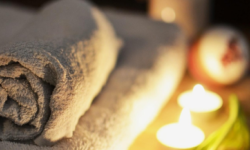Clearing a clogged bathtub drain is dirty work. But in most cases, fixing the problem is a DIY project. Gathering the tools you are likely to need before attacking the problem will keep you from wasting time and making a mess. Most of the tools you may need are probably in your house already:
- Needle-nose pliers.
- A screwdriver to fit the screws in your bathtub drain and/or overflow plate.
- Wire coat hanger or other heavy wire, straightened.
- Toilet plunger.
- Plumber’s auger or a disposable plumbing snake.
- Rubber gloves.
- Old scrap cloth or towels.
- Duct tape.
- Vinegar.
- Baking soda.
- Washing soda.
- Salt.
- Trash can .
Combating a Slow Bathtub Drain
Perhaps your drain isn’t completely clogged. In such instances you can try two quick fixes.
- First, you can try a natural enzyme drain cleaner. Look for one formulated for use on shower or bathtub drains. Carefully read the product details and follow the usage instructions exactly. In most cases, you either mix the enzyme cleaner with water or apply it straight, pouring it into the drain and allowing it to sit in the pipes several hours before flushing. An environmentally friendly product, the enzyme cleaner contains ingredients that eat away biological contaminants, hopefully clearing the drain. Better than using harsh chemicals, enzyme drain cleaners may not be completely effective against hair, however, which is the primary item that clogs bathtub and shower drains.
- Professionals often suggest that DIYers try a second method to encourage slow drains to flow faster. Run hot water – as hot as your bathtub faucet provides – through the drain for about five minutes. Sometimes very hot water alone is enough to dislodge hairballs and other obstructions. Immediately pour a cup of salt into the drain, then a large pan full of boiling water. This treatment works especially well for clogs further down the tub drain.
If neither of these methods work or your drain is completely clogged, try the following methods instead.
Clearing Bathtub Clogs
Most bathtub and shower drain clogs involve the drain stopper. Depending on the stopper style, there are likely several parts running through the drainpipe, allowing you to open and close the drain with ease. The problem is, these same parts catch hair and other gunk that eventually clogs the drain. The solution? Put on your rubber gloves and first disassemble and clean the stopper. If you are uncertain how to remove or disassemble your stopper, consult the manufacturer’s instructions first. If that doesn’t work, you’re in the perfect position to dig a little deeper.
- Protect your bathtub surface. Spread a towel or cloth in the bathtub to lay your tools on. This prevents scratching the tub surface.
- Remove the drain stopper. Raise the stopper lever to open the drain and remove the stopper assembly. If you have a drain stopper with a strainer grating over the drain instead of a movable stopper, remove the screw anchoring it in place after opening the drain.
- Clean the stopper assembly. Remove any hair wrapped around the stopper or the armature connected to the stopper. Fish out hair in the drain under the now-removed stopper or strainer, using a hooked piece of wire or needle-nose pliers. Scrub or soak the stopper assembly, if desired, in a solution of half vinegar, half water to remove contaminants such as hard water residue buildup.
- Remove the overflow plate. Detach the overflow plate by backing out the two screws holding it in place. Wiggle and pull to loosen and free the plate plus any attached stopper linkage running through the overflow pipe. Clean the assembly, if preferred, or simply pull of the hair and gunk attached to it.
- Cover the overflow plate opening. Use duct tape to cover the opening. The point is to make sure there is no air leak in the pipe, so make sure the hole is completely sealed.
- Plunge the bathtub drain. Run hot water in the bottom of the bathtub until you have at least a couple of inches of water. Situate the plunger over the drain and use a rapid, up-and-down movement to plunge the drain five or six times. As you work, you will see the tape covering the overflow opening move slightly, indicating you have created a vacuum. This vacuum works to push the clog through the pipe as you plunge. Lift the plunger every so often to allow debris to shift, then repeat the plunging. If, after several minutes, the drain remains clogged, try the next method.
- Snake the drain. For a last-ditch effort, try snaking the drain. Using the overflow opening, not the drain opening, feed about 30 inches of cable down the pipe. Feel the line as you work – a clear pipe should offer no resistance. A clog, on the other hand, will offer a soft resistance, as will entering the P-trap under the tub. (Older homes may have drum traps instead, with a clean-out cap located near the bathtub. In this case, snake through the drum from this access point.) Retrieve the cable and repeat only if you failed to get the clog out.
- Flush the drain. Run several gallons of hot water through the bathtub drain. Follow with some salt, then boiling water, to completely flush the pipe.
- Reassemble the drain. Once you’re confident your drain is unclogged, reassemble the bathtub drain. Reinsert the pop-up stopper assembly, if applicable, or replace the strainer over the drain. Moving to the overflow plate, guide the linkage, if any, into the overflow pipe. Screw the plate in place. Operate the drain stopper to ensure everything functions properly before cleaning up your work area.
Note: It’s natural to assume that if your shower or bathtub doesn’t drain, then the tub drain itself must be clogged. However, in some instances the tub drain isn’t the problem at all. Most of your home’s drain lines are connected with each other, so a clog elsewhere can cause your tub to back up with water. If the previous actions fail to clear your tub or shower drain, you may wish to consult a professional. Cleaning a main sewer line is a little more difficult.
Keeping Your Drain Flowing
If your bathtub or shower drain tends to get stopped up easily, try a little preventative medicine:
- Dump a cup or two of baking soda down the drain. Follow with an equal amount of vinegar. When combined, the two create a foam that helps clear pipes. Wait 30 minutes, then flush with boiling water. Avoid using the drain for another 15 to 20 minutes afterward.
 (0)Dislikes
(0)Dislikes (0)
(0)











